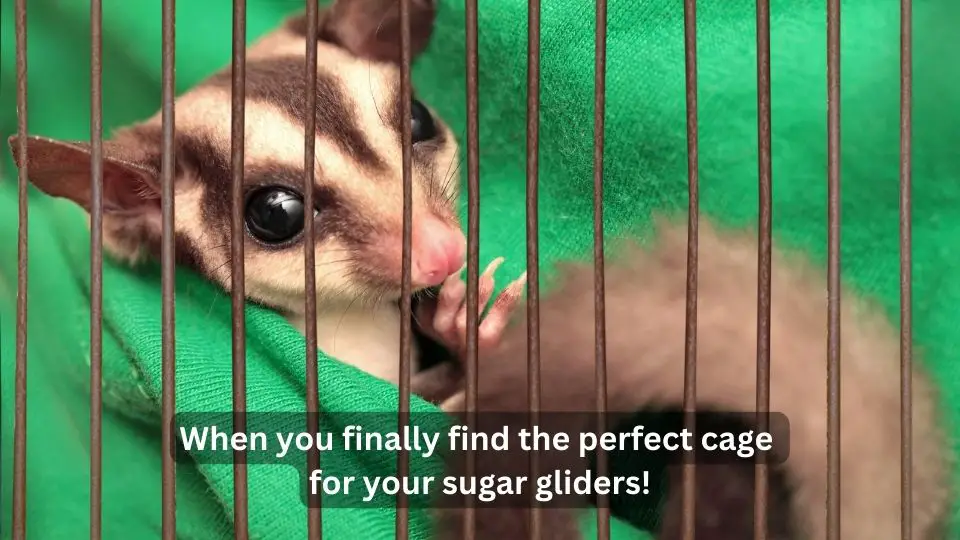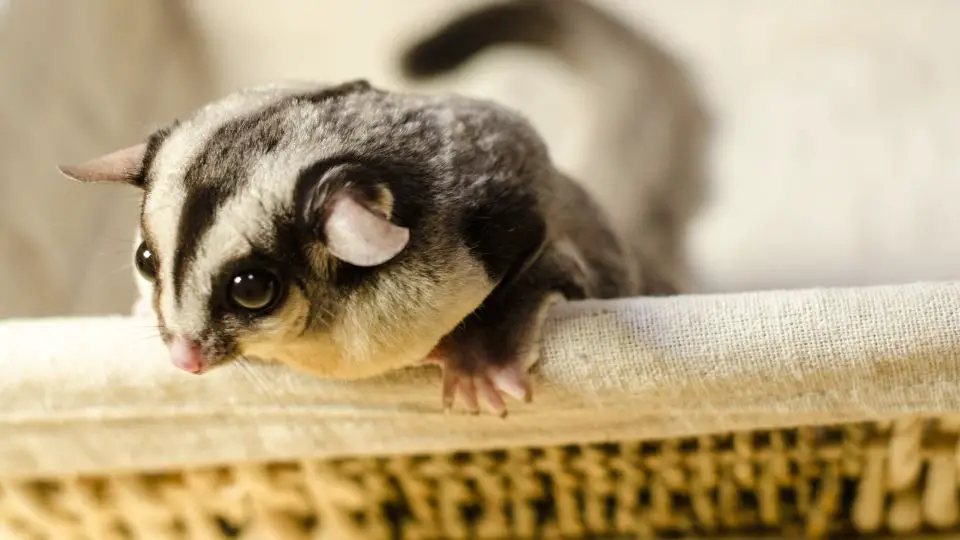One of the most common health problems faced by sugar gliders is eye infections. There are a number of different causes of sugar glider eye infections, but the most common is bacteria.
Sugar glider eye infections can be treated with a number of different methods, but the most effective is antibiotics.
Eye infection is a common sugar glider health problem
One of the most common health problems seen in sugar gliders is eye infection. The symptoms of eye infection include redness, discharge, and increased tearing. If left untreated, eye infections can lead to serious complications.
Fortunately, eye infections are relatively easy to treat with antibiotics. However, it is important to catch the infection early and get your sugar glider to the vet as soon as possible. With proper treatment, most sugar gliders make a full recovery from eye infection.
Most common eye infections include:
Corneal Lipidosis
Corneal Lipidosis is an accumulation of lipids in the cornea, which is the clear outer layer of the eye. This condition can be caused by a poor diet (a diet that is high in fat).
This infection appears as a yellowish or white film on the surface of the eye.
Conjunctivitis
Conjunctivitis is an inflammation of the conjunctiva, which is the thin, transparent layer that covers the white part of the eye. This condition can be caused by a bacterial or viral infection, allergies, or irritants such as dust or smoke.
Symptoms of conjunctivitis include redness, discharge, and increased tearing.
Glaucoma
Glaucoma is an increase in pressure inside the eye. This condition can be caused by a blockage in the drainage system of the eye, inflammation, or a buildup of fluid in the eye.
Symptoms of glaucoma include squinting and a white haze in the pupil. In order to be diagnosed with glaucoma, your vet will need to perform a complete an exam inside the eye.
Retrobulbar Abscess
A retrobulbar abscess is a collection of pus behind the eye. This condition is usually caused by a gum or tooth infection that has spread to the eye.
If you feed your glider a lot of sugar, there is a greater chance that they will develop this eye infection due to dental decay.
Signs of sugar glider eye infection
The most common sign of eye infection is squinting. Your sugar glider may also have runny eyes or a white haze in the pupil. If you notice any of the signs mentioned below, take your glider to the vet as soon as possible.
Squinting
Squinting appears when your glider tries to protect their eye from light. Sugar gliders are nocturnal animals, so they are sensitive to bright light. However, if your glider is squinting during the day, it may be a sign of eye infection.
Redness
Redness in the eye is another common sign of infection. It appears when the blood vessels in the eye become dilated and it one of the first signs of an eye problem.
Increased tearing
If your glider has watery eyes, it may be a sign of infection. Sugar gliders produce tears to keep their eyes moist and lubricated. However, if the eyes are producing too many tears, it may be a sign of infection.
White haze in pupil
A white haze in the pupil is another sign of glaucoma. This symptom appears when there is an increase in pressure inside the eye.
Runny eyes
Runny eyes is a symptom that is often caused by allergies or irritants such as dust or smoke. Runny eyes are when the eyes produce too many tears and the tears overflow.
Rubbing The Eye
Sugar gliders will groom themselves frequently, but if they are excessively rubbing their eyes, it may be a sign of a problem.
Sugar glider eye infection treatment
Some methods to treat a sugar glider eye infection include:
Cleaning the eye
The first step to treating an eye infection is to clean the eye. This can be done with a cotton swab soaked in warm water. Gently wipe the cotton swab around the eye, being careful not to touch the eyeball.
Applying a warm compress
Another way to clean the eye is to apply a warm compress. This can be done by soaking a clean cloth in warm water and then applying it to the eye for a few minutes.
Using an antibiotic ointment
Antibiotic ointment can be used to help clear up the infection. Apply a small amount of ointment to a cotton swab and then gently apply it to the eye.
Using an eye drop
If the infection is more severe, your vet may prescribe an eye drop. Apply the drops as directed.
Surgery
In some cases, surgery may be necessary to remove the infected tissue. This is typically a last resort and is only done in severe cases.
How do you treat a sugar glider abscess?
An abscess is a pocket of pus that forms when bacteria enters the body and the immune system responds by walling off the infection. Sugar gliders are susceptible to abscesses because of their high metabolism and their grooming habits. If an abscess is not treated promptly, it can become life-threatening.
One of the most effective treatments for dealing with sugar glider abscesses that do NOT involve a tooth is to insert a drain when the abscess is drained. This allows the infection to drain out completely and prevents it from recurring. Also, using an antibacterial soap (such as Betadine) or an antiseptic solution (such as iodine) around the opening of the abscess helps to speed healing and prevent infection.
If the abscess is located near a tooth, the tooth may need to be extracted. In this case, it is important to seek veterinary care immediately. Untreated, an abscess can cause serious health problems, including sepsis (a potentially life-threatening condition caused by infection). With prompt and proper treatment, most sugar gliders make a full recovery.
How to Decide Whether to Have Surgery on a Sugar Glider
If you’re facing a decision about whether to have surgery on your sugar glider, there are a few things to consider. First, what is the prognosis for your pet without surgery? If the condition is not life-threatening and there is a good chance for recovery with medical treatment, surgery may not be necessary.
Second, what are the risks of surgery? While all surgeries carry some risk, complications are rare in healthy sugar gliders. Finally, what is the cost of surgery? Surgery can be expensive, so be sure to consider all the costs involved before making a decision.
With careful consideration, you can make the best decision for your beloved sugar glider.
Can a sugar glider go blind?
Yes, sugar gliders can go blind or can suffer from partial blindness. The most common cause of blindness in sugar gliders is a high fat diet, a diet that mainly consists of mealworms and seeds.
Can sugar gliders have amoxicillin?
Amoxicillin is a broad-spectrum antibiotic that is used to treat bacterial infections in humans and animals. It is safe for sugar gliders to take amoxicillin when prescribed by a veterinarian. Amoxicillin is available in oral and injectable forms. The oral form is the most common and is typically given twice daily.
Conclusion
Sugar gliders are prone to eye infections due to their high metabolism and grooming habits. If you suspect your sugar glider has an eye infection, the first step is to consult your vet. There are several signs to look for, and treatment typically involves cleaning the eye and using an antibacterial soap or antiseptic solution. In some cases, surgery may be necessary. With prompt and proper treatment, most sugar gliders make a full recovery.







